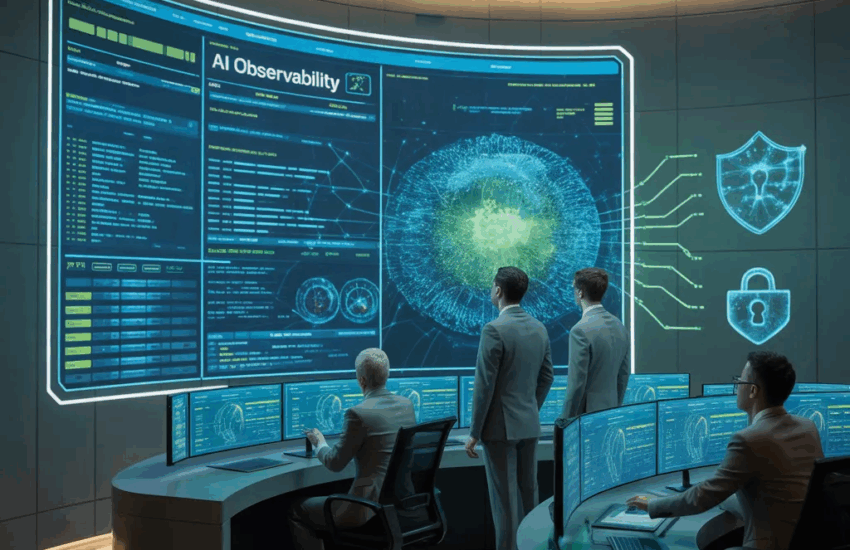In the modern enterprise, the rise of AI is transforming everything—from business models to security postures. Yet as we race ahead, a new, often overlooked risk emerges: What happens when AI, critical to operations and decisions, misbehaves or loses coherence? The recent debut of platforms like Raindrop, an AI-native observability platform covered by VentureBeat, underscores a paradigm shift. Observability for AI is no longer a luxury; it is rapidly becoming essential for both cybersecurity resilience and robust GRC integration.
Rethinking Observability: If You Can’t See It, You Can’t Govern or Protect It
Traditionally, observability has focused on infrastructure or software: logs, metrics, traces. However, AI models—especially those driving user-facing automation, customer decisions, or processing sensitive data—operate with a new layer of abstraction. Unlike deterministic systems, AI is inherently probabilistic and can develop “drift,” hallucinate outputs, or be manipulated via data poisoning and adversarial attacks. Without tailored observability, these misalignments go unnoticed until they trigger reputational damage, compliance violations, or new entry points for attackers.
AI observability platforms like Raindrop bring continuous, real-time monitoring and explainability to AI operations. They track model outputs, detect shifts in behaviour, flag when models start deviating from defined guardrails, and provide visibility into AI app “experience debt”—that is, poor, unpredictable, or even offensive behaviour that erodes user trust or violates compliance.
Why This Revolution Matters: Direct GRC Impacts
Let’s make it concrete. In the context of Governance, Risk, and Compliance, AI observability tools offer several pivotal benefits:
1. Operational Risk Reduction
You cannot assess or mitigate risks you do not know exist. Observability platforms allow organizations to detect anomalies in real time—catching not only security threats (like adversarial AI tampering or data leakage), but also compliance threats (such as unauthorized data use or outcomes that breach anti-discrimination frameworks).
2. Model Governance and Accountability
Governance frameworks—including ISO 27001, NIST AI RMF, GDPR’s Article 22 (automated decision making), and the soon-to-land EU AI Act—demand detailed accountability and explainability for automated systems. AI observability platforms provide continuous documentation, attack-path mapping, and evidence for regulatory inquiry, slashing both audit pain and legal exposure.
3. Security Monitoring and Incident Response Prime
Just as your SOC depends on SIEM for infrastructure, AI observability is the SIEM of modern ML/AI environments. It accelerates incident response for model exploits, bias introduction, “shadow AI” proliferation, and permissions sprawl that could threaten both compliance and operational resilience.
4. Enhancement of Customer Trust (and Brand Resilience)
If users or staff find AI unreliable, opaque, or hostile, your business loses trust—something ever harder to regain in a hypercompetive landscape. Observability, powered by transparent monitoring, lets organizations act before disasters reach users, thus fortifying reputational risk management and providing tangible, continuous assurance to board members and regulators.
Making AI Observability Actionable in GRC and Cybersecurity
Building an immune system for your AI takes more than dashboards and pretty graphs. The following strategies leverage the raw insights of AI observability in ways that are immediately actionable and scalable for mature organizations already invested in compliance and cybersecurity frameworks:
- Map Model Behaviors to Risk Controls: Integrate observability alerts into your risk register. When AI behaviors drift, automatically link those incidents to control failures or test cases and launch predefined risk mitigation workflows.
- Harmonize ‘Explainable AI’ with Your Audit Universe: Instead of retrofitting explanations at audit time, continuously log AI decisions and rationales, and compare them with compliance frameworks, ensuring deterministic mapping to regulatory clauses (e.g., GDPR or ISO controls).
- Orchestrate Automated Response Playbooks: Couple observability tools with SOAR platforms or GRC automation. When a model misfires, trigger instant data access reviews, revoke compromised credentials, or spin up rapid internal investigations for compliance documentation.
- Champion Cross-Disciplinary ‘AI Trust Teams’: Create tiger teams that blend security, GRC, data science, and legal. These teams meet regularly to analyze observability data, re-tune controls, and prepare board dashboards on AI compliance health, readying your organization for evolving standards like the EU AI Act and DORA.
- Integrate Observability into Your Incident Response and BCP/DR: Extend existing cyber incident plans to expressly include AI model failures, shadow AI, or compromised training data. Observability here acts as both detection and evidence log.
From Concept to Execution: Your Next Steps
Are you ready to operationalize this paradigm:
- Inventory all AI/ML apps in production and shadow deployments.
- Pilot an AI-native observability platform (like Raindrop) and map key compliance and risk events to what observability can expose.
- Build continuous AI monitoring into your core GRC architecture, making it a first-class element (not an afterthought) in risk monitoring, reporting, and response.
- Educate stakeholders—especially the board—on the new reality: AI threats are both technical and governance-driven, requiring joint strategy and ongoing investment.
Summary
AI observability is quickly becoming indispensable for organizations that take cybersecurity, governance, risk, and compliance seriously. Far from a technical afterthought, it is the cornerstone of building resilient, trustworthy, and compliant digital operations. By deploying these new platforms, organisations can transform the AI black box into a transparent, controlled, and ultimately trustworthy asset—protecting not only their organization’s data, but also its brand, regulatory standing, and customer trust in the age of intelligent automation.
Learn more about how Minotaur Solutions helps organizations navigate the intersection of AI, cybersecurity, and GRC. If you want your AI to be a shield rather than a risk, start with observability—because if you can’t see it, you can’t govern, secure, or comply.


